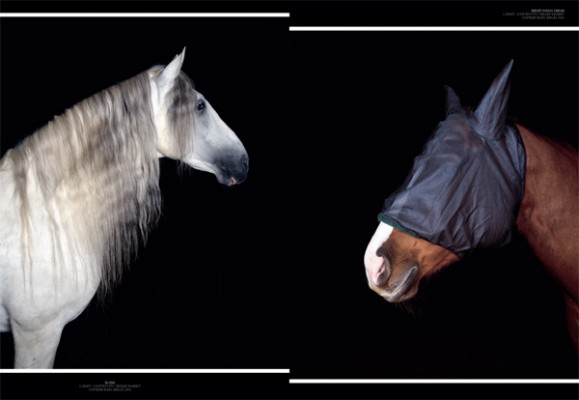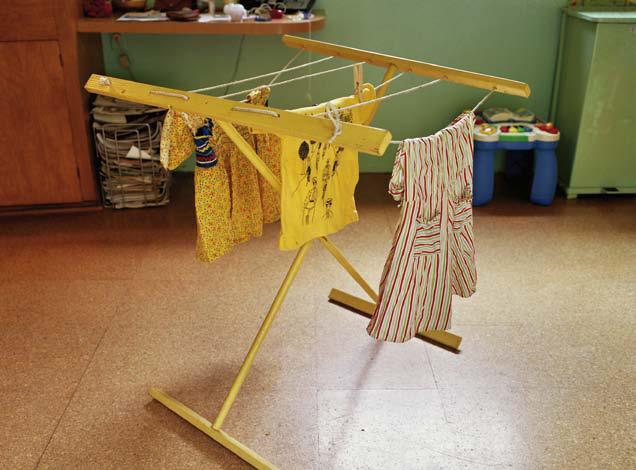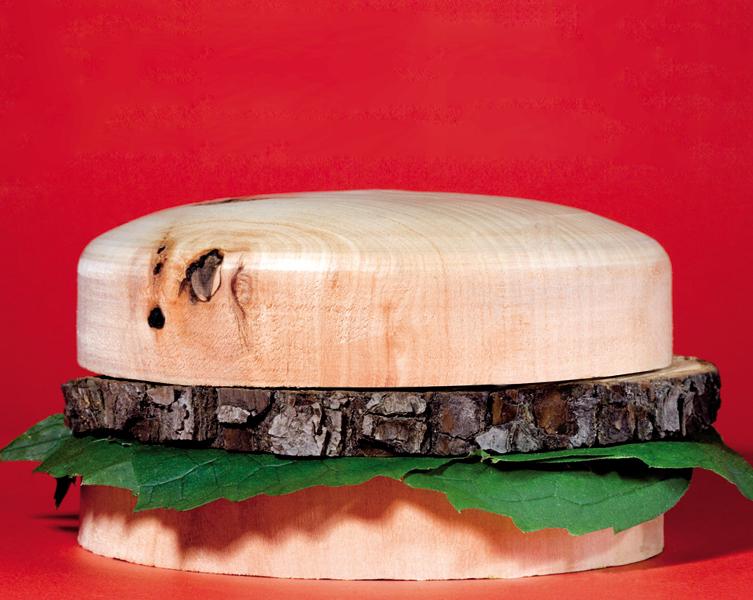
03.15.10
Excerpt: Magazine
A Guide Magazine
We’ve seen magazine issues themed around water, procrastination, infrastructure, age, Belgium, and sex. But horses? Not until we picked up the latest issue of one of our favorite new reads, A Guide Magazine. Conceived by the Vienna-based duo of graphic designer Albert Handler and his fashion-world wife Ulrike Tschabitzer-Handler, and named for the city guides that appear as pullouts in each issue, A Guide Magazine is a biannual publication devoted to craft and creativity. The editorial focus is on heritage companies and the creative minds who helm them; the common denominator among most of its subjects is “the combination of tradition and innovation, of passed-on knowledge and contemporary interpretation.”
What does this mean in practice? For A Guide Magazine’s first issue on handcraft — released during October’s Vienna Design Week — much of the book’s 39 pages were given over to exploring the legacy of the Austrian men’s outfitter and tailoring atelier Knize, which sews and cuts by hand 150 suits per year and was likely the first fashion house to create a signature cologne. Other features include an excerpt from Richard Sennett’s The Craftsman and interviews with the head of the costume department at Austrian Federal Theatres, as well as with the head of production at the family-owned Austrian boatyard Frauscher.
The framework for the second issue is horses: horse breeding, equestrian sports, architecture for the keeping of horses, the horse’s symbolism in the world of luxury labels, and the animal’s connection to fashion and design. “Just like the ‘handcraft’ theme of the first issue, the horse also enjoys a grand tradition and a rich history, in which a broad range of perspectives and disciplines intersect and mutually inspire one another,” explains Tschabitzer-Handler, who’s currently at home on maternity leave with the couple’s baby, Milla. “The horse plays an indispensable role in human development and has made a significant contribution to economic and cultural progress.”
The issue kicks off with the 2002 photographic series shown here, by the Chicago-based duo Beate Geissler and Oliver Sann; as the artists explain, their “work gives the horse the space that humans would normally claim in a portrait.” The rest of the issue includes mini profiles on Hermès, Eadweard Muybridge, Roy & Trigger, and Bucas, the 30-year-old Irish manufacturer of horse blankets, which we’ve excerpted for your pleasure below.
Anoraks for Horses
By Karin Pollack
It is cold, windy and wet: People get their down jackets out of their wardrobes, while animals grow a thick fur coat for protection in winter. Horses too. Horsemen who have to work with their animals every day don’t like this very much. The horse sweats during training; the thick fur coat gets wet and only dries very slowly. And that’s dangerous because horses can catch a cold and nothing is more feared in stables than a rampant cough.
The good news: Nature can be cheated when it comes to hair growth. Horsemen who want to spare their horses from developing a thick winter pelt put a blanket on them from autumn on. Those manufactured by the company Bucas are considered the “Mercedes among horse blankets”. They are available in many different sizes, for different temperatures, in many designs and, moreover, are water-resistant, breathable, antibacterial and even come with sunscreen.
The idea for high-quality equestrian accessories came from three Scandinavians who met in 1981 in Ireland. The Swede Ulf Casselbrant and his father Brent produced sports and camping accessories there; the Norwegian Knut Dalset was one of their customers. “Knut is the horse-person of us three. You see horses everywhere in Ireland, and one day we had the idea to make really good blankets for these animals,” Casselbrant recalls. “At that time there simply weren’t any available.” Daselt had the connections to the horse world. He researched deficiencies, wishes and needs.
Casselbrant, on the other hand, brought material and technical know-how. He had experience with expedition equipment in the Antarctic and with work clothes on oil platforms. “Getting wet must be avoided there at all costs,” says Casselbrant. Bucas then also refined the cut of the blankets; horse breeds were measured and the best possible sizes developed. “What’s crucial for the correct fit is the neckline,” the Bucas development team realized very quickly, and what is even more important is that the blankets, which are in fact bad weather clothes for horses, fit well around the neck and don’t chafe them. By the way, connoisseurs have several Bucas blankets: even horses should be able to change their outfits in winter.



